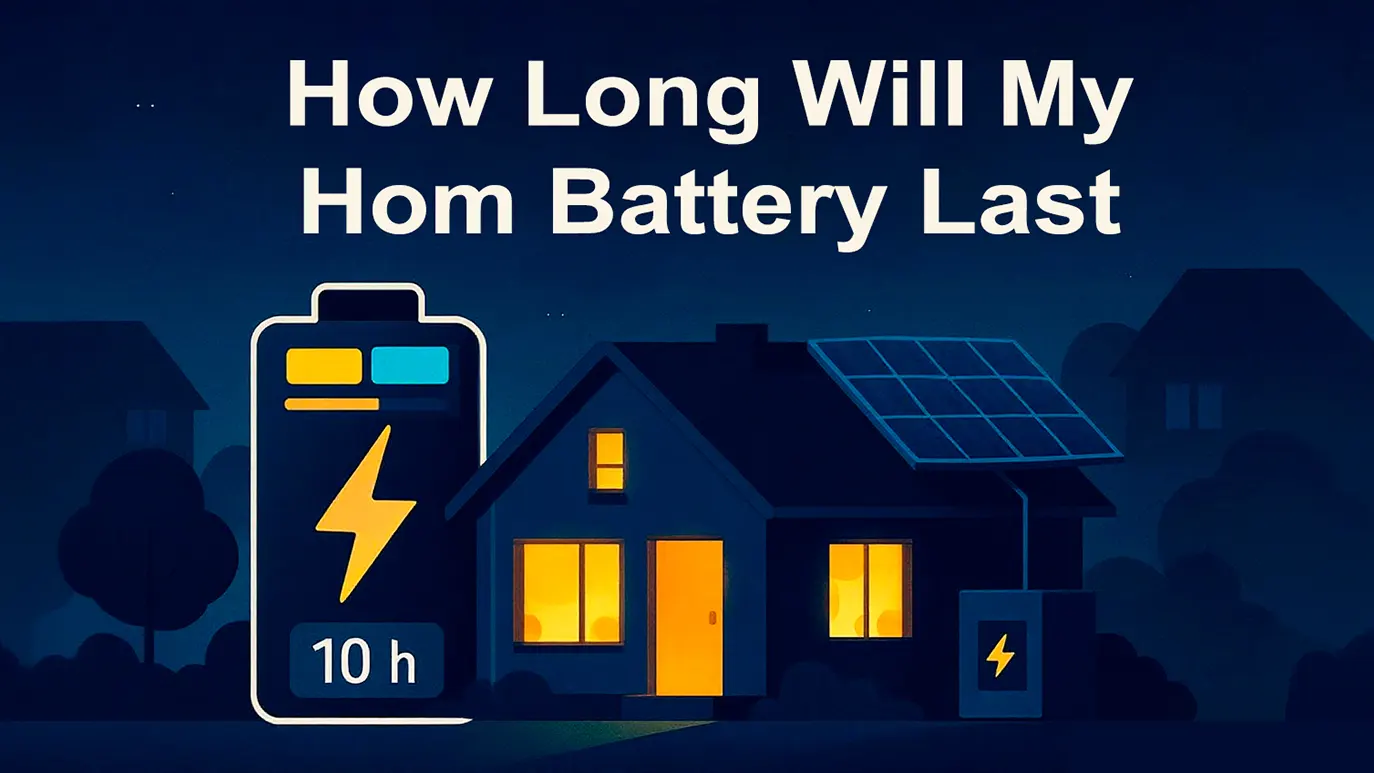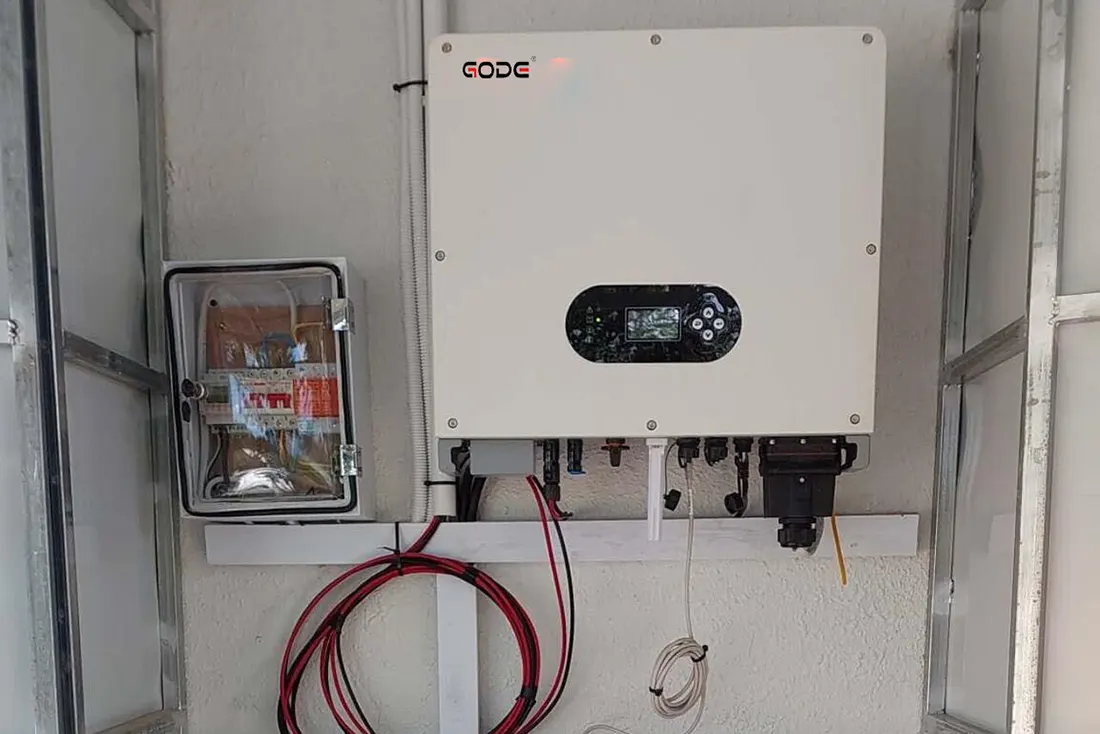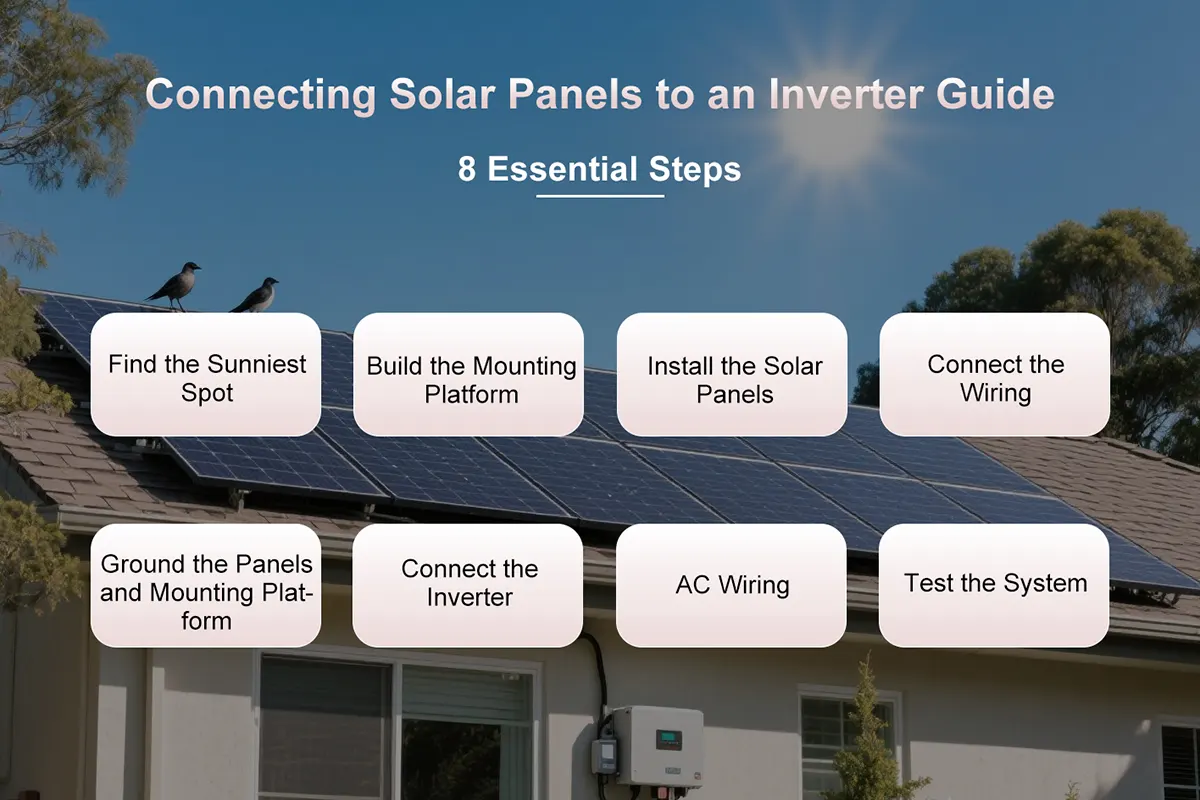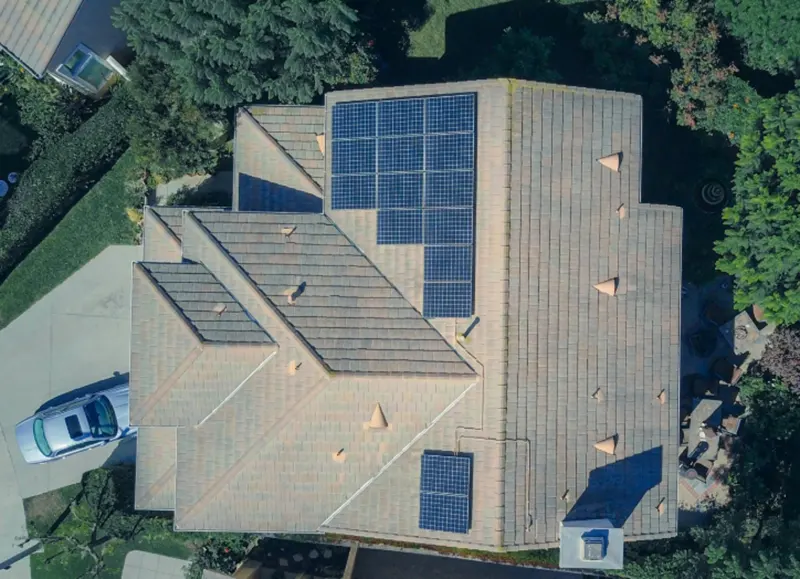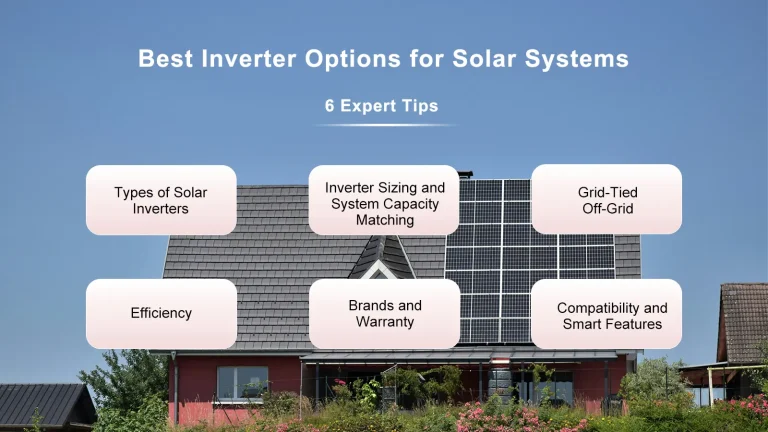11 June, 2025
Solar Panel Cleaning and Maintenance Guide: How to Maximize Power and Lifespan
Keeping your solar panels clean is not just about appearance—it’s a key step to ensure they generate power as efficiently as possible. Regular cleaning to remove accumulated dust, leaves, bird droppings, and other debris is especially important in dry and dusty areas. In this guide, we will explore the importance of cleaning solar panels, common sources of dirt, recommended cleaning frequency, and how to maintain optimal performance.
Why Clean Solar Panels
Solar panels are the core of a photovoltaic power system, and their efficiency directly impacts the system’s performance and economic benefits. Being exposed to outdoor conditions over long periods means that the panels’ surfaces can easily accumulate dust, bird droppings, leaves, and other pollutants, significantly hindering sunlight absorption and causing a notable decrease in power generation efficiency. This is particularly evident in dusty and sandy environments. If not cleaned in time, these factors not only reduce the system’s performance and economic returns but may also shorten the lifespan of the panels. Therefore, regular cleaning of solar panels is crucial.
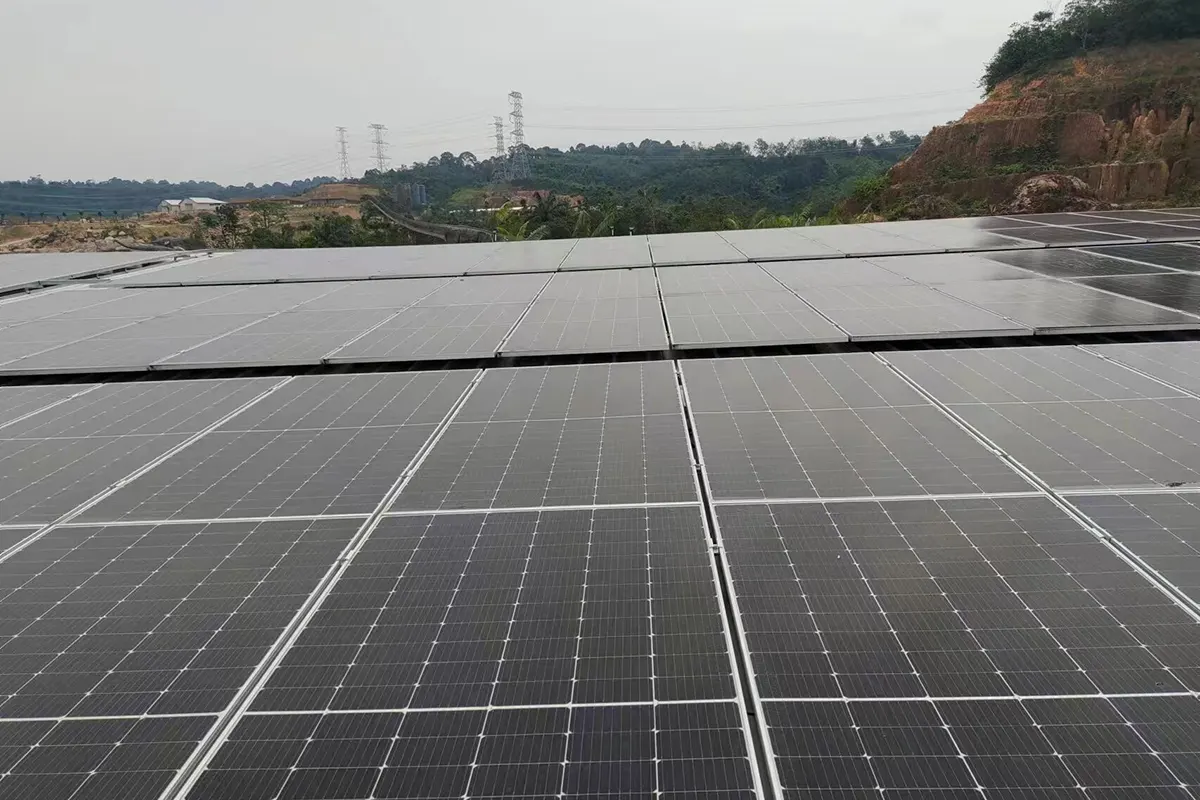
1. Improve Power Generation Efficiency
Contaminants on solar panels reduce the panels’ ability to absorb sunlight, thereby lowering the photovoltaic conversion efficiency. According to a report by the National Renewable Energy Laboratory, power output of uncleaned solar panels can decrease by 5% to 20%, or even more under extreme conditions. Regular cleaning can effectively restore your photovoltaic system’s power generation capacity.
2. Extend Panel Lifespan
Long-term accumulation of pollutants not only affects power generation efficiency but can also damage panel materials. In areas prone to wind and sand, dust and sand can cover panel surfaces for extended periods, causing minor scratches on the glass and accelerating material aging. Regular cleaning helps prevent such wear and tear, extending the lifespan of your panels.
3. Increase Economic Benefits
For large-scale solar power plants, cleaning costs are directly related to system output. Regular cleaning improves overall power generation, boosts income, and reduces economic losses from decreased production. Additionally, extending panel lifespan reduces maintenance and replacement costs, ultimately enhancing the project’s overall economic return.
Common Sources of Contamination for Solar Panels
Contamination sources vary depending on region, environment, and weather. Here are some of the most common:
Dust and Sand
In dry, windy, and sandy regions, airborne dust and sand are the most common pollutants. They not only cover panels and block sunlight but also cause abrasive wear when blown by wind, creating scratches.
Bird Droppings
Bird droppings typically cover specific areas of solar panels and can be particularly harmful. They not only block light but also corrode the panel’s material, causing localized hotspots and reducing overall power output.
Leaves and Other Organic Matter
In areas near forests or farmland, leaves and insect debris often accumulate on solar panels. While these may not cover large areas, if left unattended, they can create shadows and reduce power generation.
Industrial Pollution
Near industrial areas, solar panels may be exposed to industrial pollutants such as soot and exhaust fumes. These sticky pollutants are harder to clean and can have a significant impact on panel performance.
How Often to Clean Solar Panels
Typically, solar panels need to be cleaned once or twice a year, but natural and human factors mean cleaning frequency should be adjusted to actual conditions.
For example:
Rainy Areas
If you live in a rainy area, solar panels may not need frequent cleaning, as rain naturally washes away dirt and debris. Cleaning once or twice a year may be enough, or sometimes not even necessary.
A Reddit user in the UK shared: his solar panels haven’t been cleaned for over seven years, relying solely on rainwater for cleaning.
Dusty and Dry Areas
If you’re in an industrial area, desert, or other dusty, low-rainfall regions, more frequent cleaning is necessary—recommended every 3–4 months.
Areas with Lush Trees
If your solar panels are surrounded by trees or greenery, we recommend more frequent cleaning, as leaves, twigs, or bird droppings are likely to accumulate.
How to Clean Solar Panels
Manual Cleaning
For small to medium-sized solar systems or panels with mild contamination, manual cleaning is a common and practical approach. Using purified water, soft brushes, and cloths, operators can carefully remove dirt and debris from the panel surfaces. This method has relatively low costs, making it ideal for distributed solar systems or rooftop installations.
Mechanical Cleaning
In large-scale solar power stations, mechanical cleaning methods are often employed. Automated cleaning robots or washing vehicles move along the panels, spraying water and scrubbing the surfaces efficiently. Mechanical cleaning significantly improves cleaning productivity and is well-suited for utility-scale solar installations, though it requires a higher initial equipment investment.
Drone-Assisted Cleaning
For elevated or hard-to-reach locations, drone-assisted cleaning is an innovative solution. Drones equipped with spraying or brushing systems can swiftly and safely clean solar panels in challenging environments. This method is particularly suitable for high-altitude installations, remote locations, and sites with complex terrain.
Water Rinsing Systems
In regions with abundant water resources, large solar power plants often install fixed water rinsing systems. These systems periodically activate spraying devices to automatically rinse the panels, reducing the need for manual labor. This approach is easy to maintain and helps ensure the cleanliness of solar panels.
Steps to Clean Solar Panels Yourself
1. Cleaning Preparation
- Choose early morning or late evening in a shady area
- Shut down the solar system
- Prepare cleaning tools: microfiber cloth, a bucket of lukewarm soapy water, extendable handle, and a low-pressure washer.
2. Rinse and Scrub
If deep cleaning is needed, first rinse the surface of the solar panels to remove loose dust and particles.
For sticky or chemically reacted pollutants, scrubbing is needed, especially around panel edges and gaps. Be gentle to avoid excessive pressure on the glass.
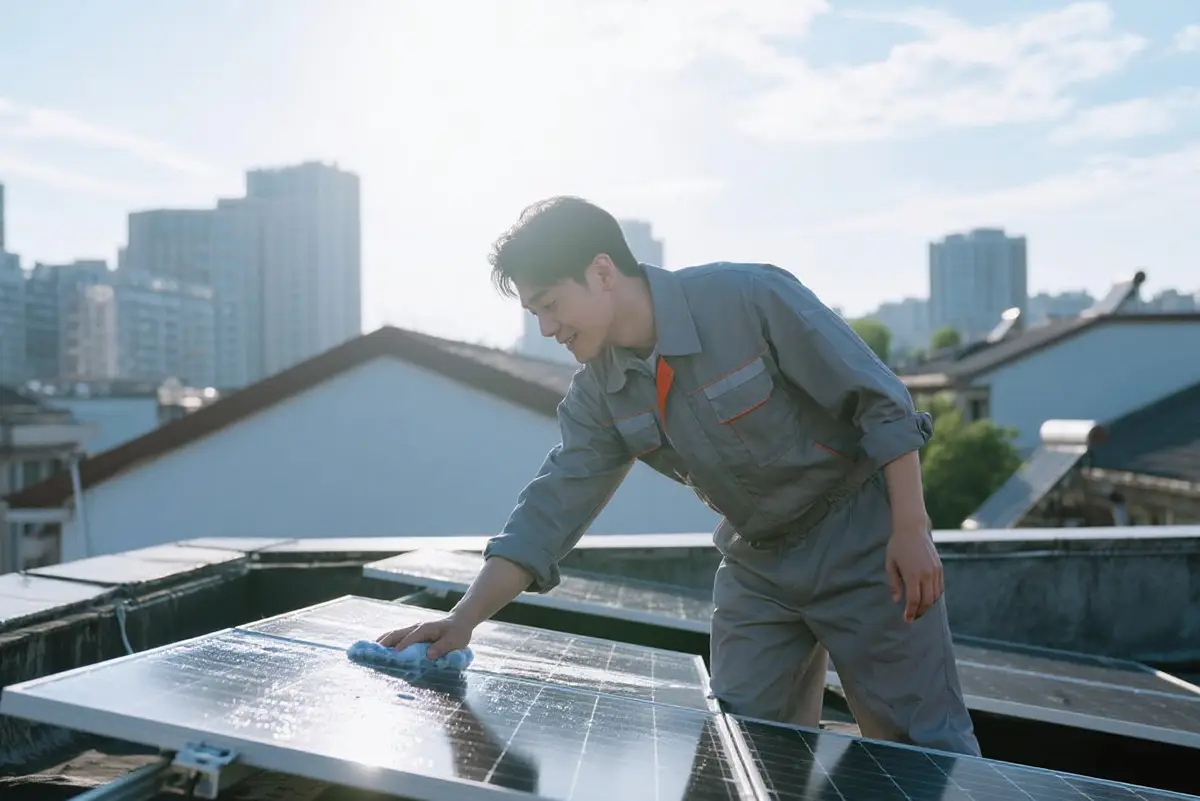
3. Rinse Again
This step is crucial! Do not skip rinsing with clean water after scrubbing to save effort. Rinsing removes fine dust, particles, and other debris loosened during scrubbing.
4. Inspection
After cleaning, check for cracks, loose connections, or debris blocking the panels. If any issues are found, document them and resolve them.
5. Regular Maintenance
After cleaning, regularly monitor the panel performance (usually with a monitoring system). If efficiency drops significantly, investigate thoroughly; if the issue cannot be identified, consult a professional.
Precautions for Cleaning Solar Panels
1. Safety First
During cleaning, ensure the safety of operators. Especially when working at heights or within solar power stations, wear protective gear, and disconnect the power supply to avoid electric shocks.
For work at heights, use helmets, safety ropes, handrails, or guardrails, and follow OSHA working-at-heights regulations (e.g., safety protection above four feet).
2. Avoid Corrosive Chemicals
The surface of photovoltaic panels is usually specially treated glass with wear-resistant and UV-resistant properties. Using corrosive chemicals may damage the surface and reduce protection performance. Therefore, use neutral cleaners or clean water for cleaning.
3. Moderate Temperature, Avoid Sudden Temperature Changes
When cleaning, the water temperature should be close to the panel surface temperature. Especially in high temperatures or direct sunlight, avoid rinsing hot panels with cold water to prevent glass breakage.
4. Avoid Scratching Panel Surface
Use soft cleaning tools such as cloth or sponge; avoid hard brushes or metal tools to prevent scratching the panel surface and reducing light transmission.
5. Cleaning Time
The best time to clean solar panels is early morning or evening, avoiding high temperatures and direct sunlight to prevent uneven heating and glass breakage. Also, avoid cleaning in rain or strong winds for safety.
6. Regular Maintenance and Cleaning
Cleaning frequency should be based on local environmental conditions and climate. In dusty areas, clean quarterly; in less polluted areas, clean every six months to one year.
7. Panel Inspection and Repair
During cleaning, also inspect panels for cracks, scratches, or aging. If any issues are found, repair or replace the damaged panels promptly to ensure system performance.
Conclusion
Regular cleaning and proper maintenance of solar panels are key steps to ensuring your solar power system operates at maximum efficiency and extends its lifespan. By understanding the sources of contamination and using the correct cleaning methods—whether manual, robot-assisted, or drone-assisted—you can keep your panels free from dust and debris, avoiding performance loss. Always prioritize safety, use gentle cleaning tools, and monitor your system’s output for any performance changes. Investing time in these tasks not only protects your panels but also maximizes the economic benefits of your solar investment.
share

